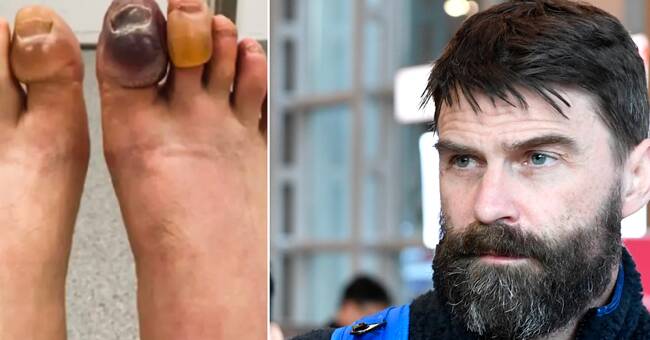It was a shocking experience for many skiers, where it was down to -30 degrees at some parts of the 60 km long race La Diagonela in Switzerland.
Several skiers have suffered cold injuries after the competition, and the Swedish elite skier Michael Eklöf risks getting rid of his right big toe which can rot and fall off.
"It's worrying"
Now the Swedish cross-country national team doctor Per "Pliggen" Andersson is criticizing the cold rules that apply in the long-distance cup.
The rules there are that it is required that 50 percent or more of the course must be -25 degrees or colder for the start to be postponed, compared to -18 in the "regular" World Cup.
- It is clear that it is worrying when you see the injuries suffered by the riders.
And medically, I can think that these cold limits are wrong.
What do you think it should be about?
- Exact degrees are difficult to say.
But I have a hard time seeing why they should have different limits than what we have in the World Cup.
"There are risks"
Per Andersson says that the discussion among the World Cup national teams and doctors was more about making the cold limit warmer, rather than moving towards approaching the long-distance cup limit.
And this is not only due to the risk of cold injuries similar to those suffered by cross-country skiers.
- We see that there are risks for our skiers when we expose them to such hard work.
Not least the airways become extremely stressed at such low temperatures when you exert maximum effort, he says, and continues:
- So it is not only peripheral cold injuries that we saw here, but we are also very afraid of the riders' respiratory function.
At what temperature do you begin to see that breathing can be affected?
- Around 15 degrees below zero.
If it is below those temperatures, we see that we get a very high load, especially on skiers who have, for example, asthma.
They are often very affected during competitions with those conditions.
Problems can arise later
According to Per Andersson, the risk for the riders increases the longer they are out in cold conditions, which means that the risks for the riders in the long-distance cup are greater than for the riders in the "ordinary" World Cup.
He also warns that problems with breathing and lungs can occur later in the day if the riders exert themselves often and for a long time in low temperatures.
- We see that cross-country skiers are very affected by breathing problems and asthma.
And there, exposure in the cold is a contributing reason why many years of skiers get asthma.
So from that aspect, we have had a discussion about training and competition in cold weather, he says.

